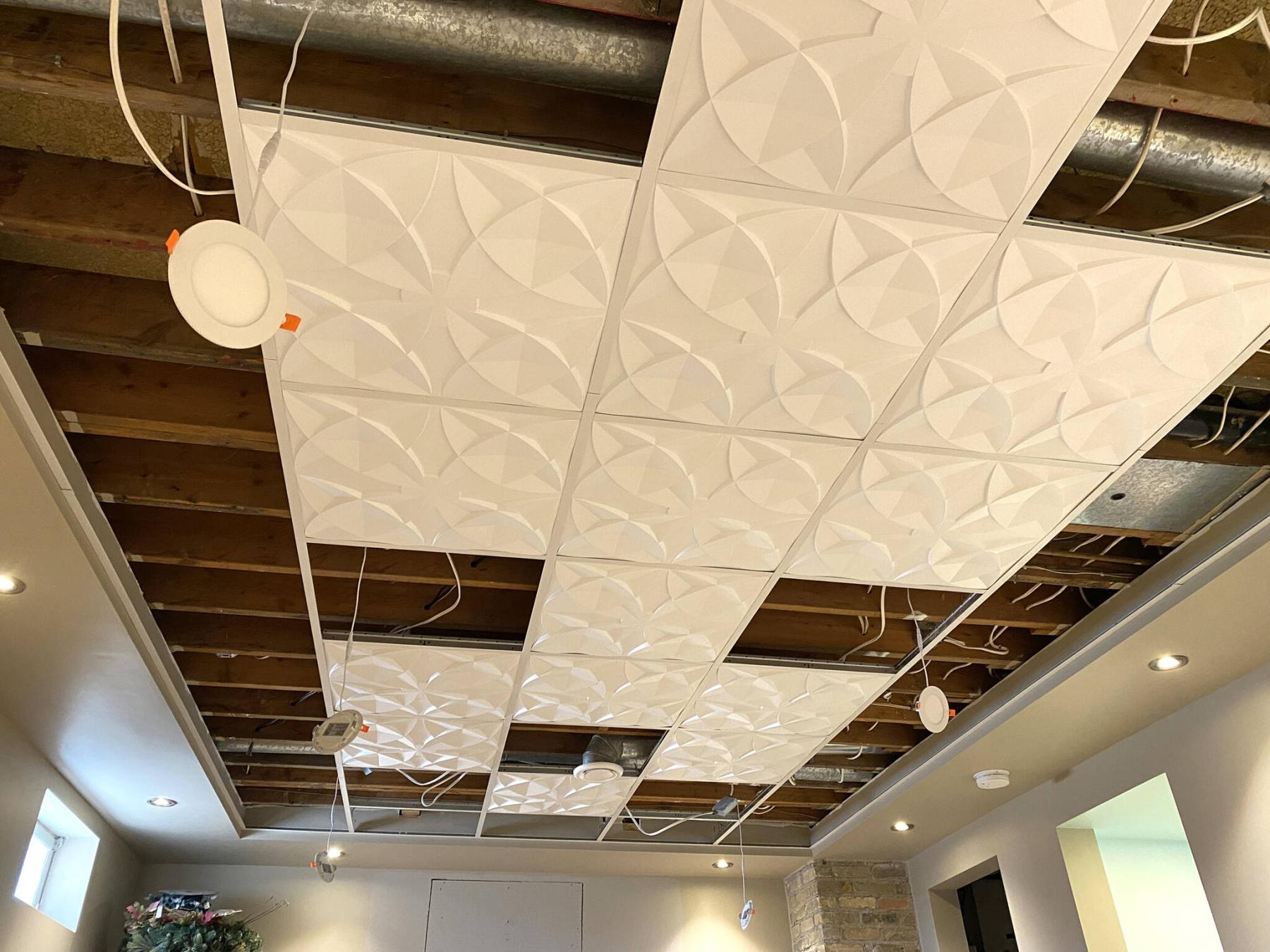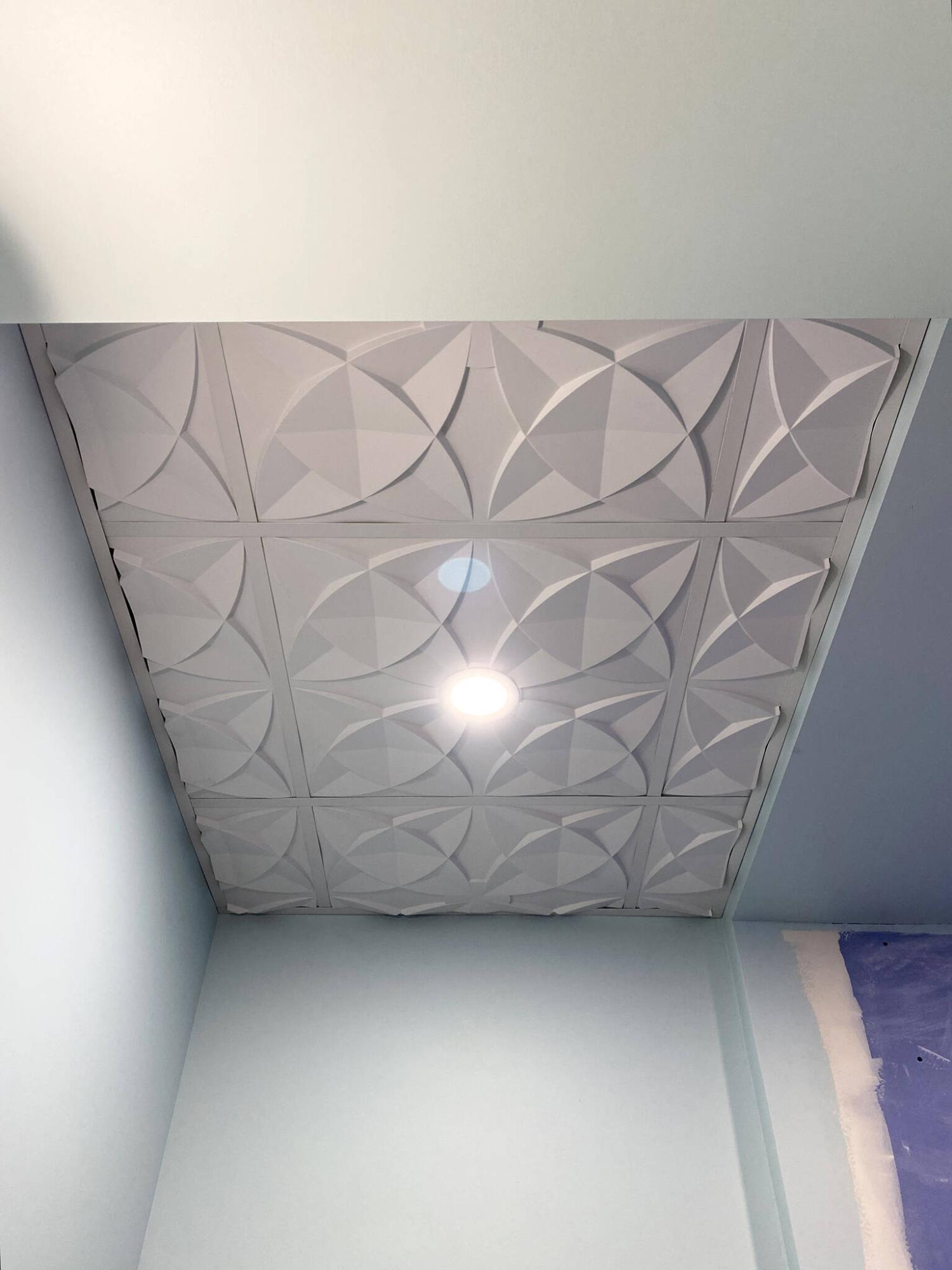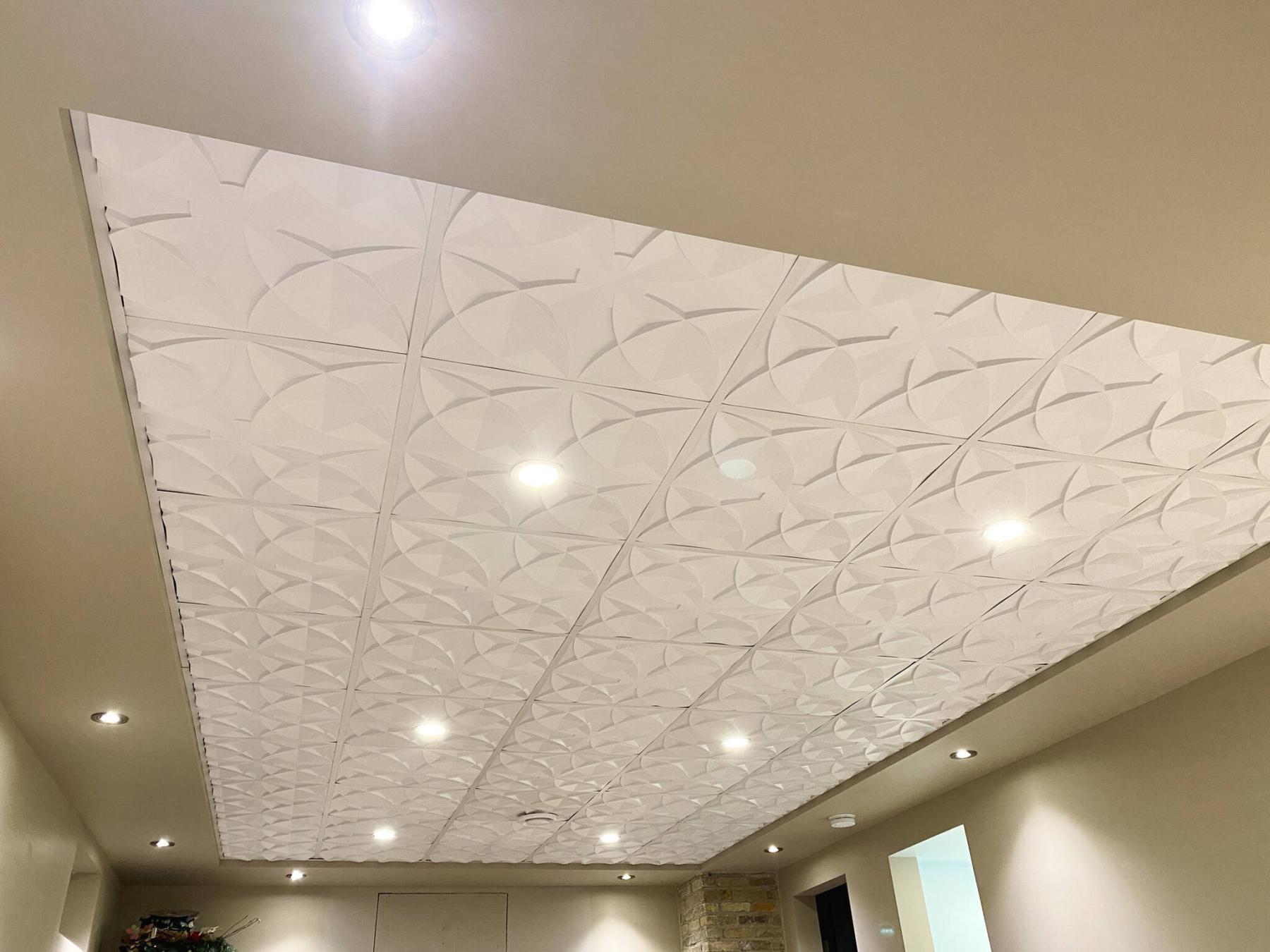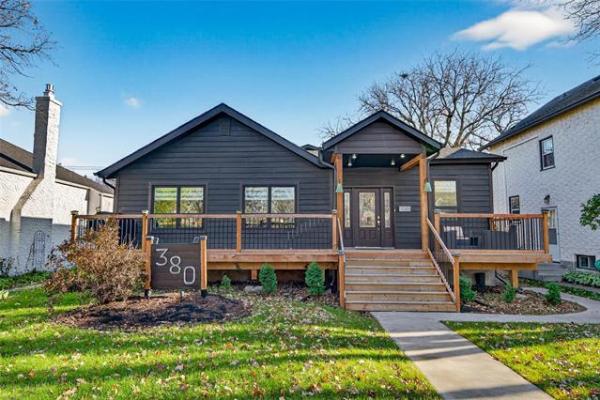
The suspended ceiling grid consists of long main Ts at two-foot intervals, with cross Ts set at two foot-intervals.

A smaller suspended ceiling was required in the bathroom, adjacent the box-framing that hides the main ducts.
The suspended ceiling is the favoured option when finishing a basement or lower level, because it allows on-going access to the services strewn amidst the floor joists of the upper level. Should the need arise to address any issues, ceiling tiles can be temporarily removed, and easily reinstalled. Unfortunately, standard fiber-based ceiling tiles can be, well — aesthetically boring, to put it mildly. Moreover, fiber tiles are delicate and somewhat flimsy, temperamental. For my basement renovation, I decided to try something a little bit different.
Having installed many suspended ceilings in the past, the grid structure is basically the same. The main “T” supports are hung from one end to the other, using a series of wire hangers to the proper elevation, whereby the ends are supported within an “L” bracket along the entire perimeter of the ceiling area. Once the main supports are in place, perpendicular Ts are clicked into position along the main Ts, at either two or four-foot intervals, depending on the size of ceiling tile chosen for the project. In this instance, two-by-two-foot tiles require two-foot intervals of cross Ts, between main Ts set at two-foot intervals as well. To ensure the grid structure remains square during the initial setup, it is prudent to install the odd ceiling tile here and there.
The basement requires four separate ceiling grids: the largest in the main rec-room area, and three smaller grids in the bathroom, laundry room, and pantry adjacent the boxing that hides the main ducts in each respective location. As mentioned earlier, the standard fiber ceiling tile would not suffice in my basement — I was looking for something with a bit more pizzazz. Fortunately, I stumbled across an ornate PVC ceiling tile at Wayfair.ca that had the sought-after “look”. Due to its complex reveal, however, the installation process along the perimeter that required tiles to be cut was lengthy, but well worth the effort. The main tiles however, are extremely easy to install. Unlike fiber tiles that are quite rigid, the PVC tiles can flex slightly allowing better negotiation during tile placement with the grid. Moreover, PVC tiles are moisture resistant, and therefore the better choice for bathrooms and high-humidity locations.
The tiles with four-inch LED slim lighting were installed first, prepped by creating the proper opening using a four-and-a-quarter inch hole saw. Coincidentally, the center design of the decorative PVC tiles chosen depicts a five-inch raised circle. By centering the hole saw within the circle, each light simply blended in to the design once mounted. The other full tiles were then set into position throughout the grid until all that remained were the perimeter tiles that needed to be cut.
When cutting fiber tiles, the dimensions are generally half an inch more than the required measurement, to allow the tile to drop within the “L” bracket fastened along the perimeter of the grid. With the decorative PVC tiles with complex reveal however, it was necessary to coordinate tiny tabs wherever the profile of the design was flush with the outer edge of the main tile edge. Without these tabs, a tile along the perimeter of the grid would simply buckle under its own weight, and fall from the grid. Once the tile-cutting protocol was established, every tile along the grid perimeter was carefully cut to fit its respective opening, with the necessary tabs to hold it in place. This process was repeated for all four areas in the basement. With all four suspended ceilings fully installed, the chosen decorative PVC tiles did not disappoint.
Traditional fiber tiles would clearly have been the safer choice. Having worked with them many times in the past, I would have known what to expect during the installation process. Choosing PVC tiles for the first time was the riskier path. However, it has always been my practice to, when trying something new, do so at my place first, whenever possible. And with a successful outcome using a profile PVC suspended ceiling tile, this newly adopted process becomes another subset of my suspended ceiling installation experience, one that can be offered with confidence as an alternative to the traditional fiber tile. It definitely makes the ceiling more interesting, don’t you think?
RenoBoss.Inc@outlook.com




